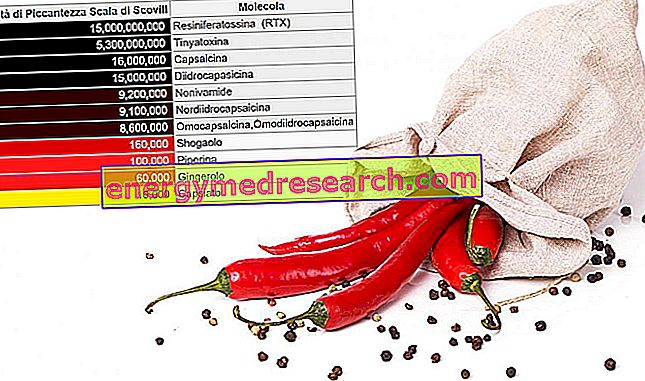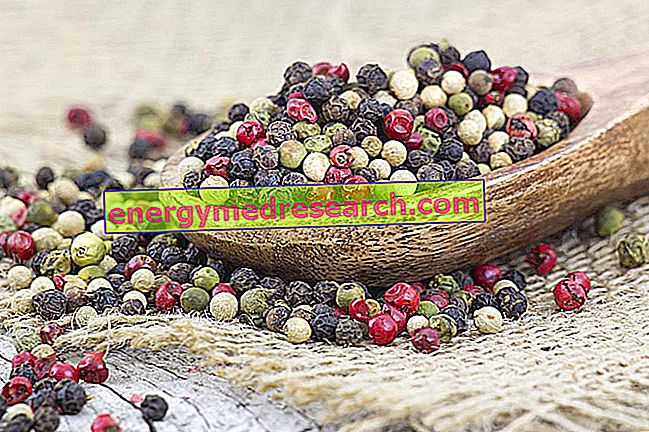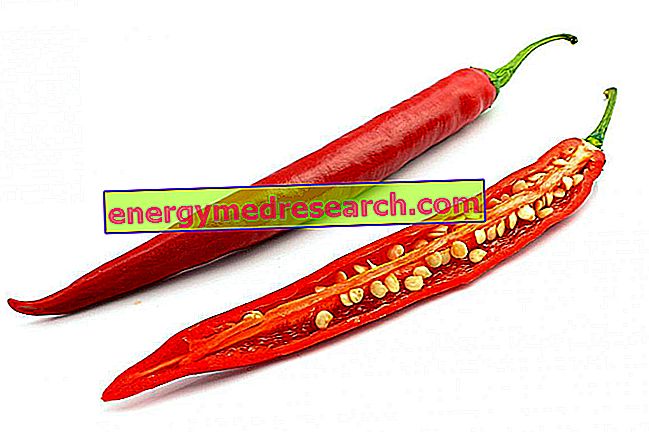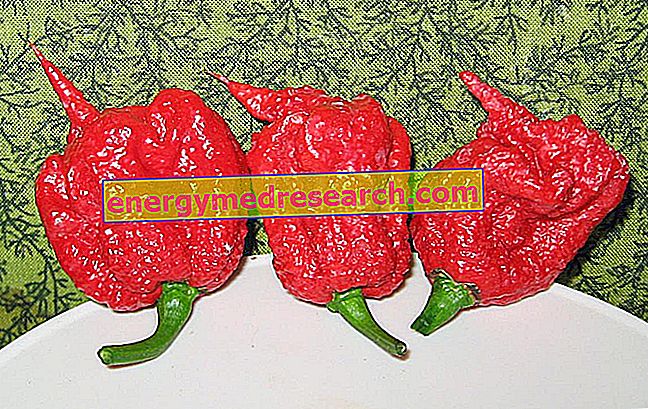Capsaicin, an active ingredient that gives the chili the characteristic spiciness, is not the most spicy substance found in nature . In the Scoville scale, used to assess the spiciness of food, it is in fact in third place, preceded by two of its analogues: Tinyathoxin : naturally present in the plant Euphorbia poissonii , common in northern Nigeria Resiniferatoxin : naturally present in Euphorbia resinifera, a plant similar to a cactus native to Morocco, and in Euphorbia poissonii
Category spices
Aromatic pepper Green, pink, black, gray, white: these are the possible chromatic variations offered by the pepper plant ( Piper nigrum) ; what distinguishes one variety from another is simply the processing and maturation of the grains. If black pepper embodies the distinction of being the spiciest in its category, and the white one the most delicate, green pepper is considered the most aromatic and herbaceous: it derives from the unripe fruit of the homonymous plant ( Piper nigrum)
Introduction It is said of the Tabasco that its effect in the eyes is almost comparable to that of acid: clearly, we have reported a metaphor for excess, although the basic concept does not deviate too far from reality. Tabasco is an extremely spicy sauce prepared with chillies, salt and vinegar: since it is chilli pepper, Tabasco can generate strong eye irritation
Wasabi is known to be the epithet attributed to an extremely spicy green sauce, typical of Japan: in fact, wasabi is the common name of a plant, the Japanese radish, in botany known as Wasabia japonica, Cochlearia wasabi , or Eutrema japonica . Wasabi: generalities Wasabi belongs to the same family as horseradish, cabbage and mustard (Cruciferae or Brassicaceae); this plant grows spontaneously along the river valleys and mountain streams of Japan
Who doesn't know turmeric? Very widespread in the kitchen, it is one of the most famous and used oriental spices. It comes in the form of a highly aromatic yellow powder, but is obtained by grinding the tuberous rhizome (clean, boiled and dried) of certain plants belonging to the genus Curcuma . It is one of the main ingredients of curry and can also be used for different purposes: perfumes, dyes, etc
It will have happened to everyone at least once to have the " mouth on fire " after having exaggerated the doses of chilli. Although the sensation is very similar to that caused by the ingestion of too hot food, this perception does not depend on a real increase in the oral cavity temperature
Turmeric is one of the basic ingredients of curry Typical of Indian cuisine, curry is the result of mixing various reduced spices into powder. Among the typical curry ingredients we find paprika, ginger, black pepper, cumin, saffron, chilli, nutmeg, and turmeric. However, the spice mixture can vary, even significantly, from one preparation to another
Pepper: white, green or black? Contrary to what one might believe, the three main commercial types of pepper (white, green and black) are always obtained from the same plant, called Piper nigrum . Piper nigrum uses fruits; these are small, almost spherical berries, first green when unripe, then red when ripe
Capsaicin, an active ingredient that gives the chili the characteristic spiciness, is not the most spicy substance found in nature . In the Scoville scale, used to assess the spiciness of food, it is in fact in third place, preceded by two of its analogues: Tinyathoxin : naturally present in the plant Euphorbia poissonii , common in northern Nigeria Resiniferatoxin : naturally present in Euphorbia resinifera, a plant similar to a cactus native to Morocco, and in Euphorbia poissonii
What does the spiciness of chillies depend on? Although it is widespread, the belief that the most spicy part of the pepper is the seeds is absolutely unfounded. The greatest quantities of capsaicin - the molecule responsible for the spicy taste - are concentrated in the placenta , that is, in the white internal part of the fruit
Forget the now famous habanero . The most spicy chili pepper in the world goes to the hybrid variety called Carolina reaper . In 2013 this hot pepper has in fact entered the Guinness Book of World Records as the most spicy in the world, reaching an average spiciness of 1, 569, 300 Scoville units, with peaks of 2, 200, 000 units










